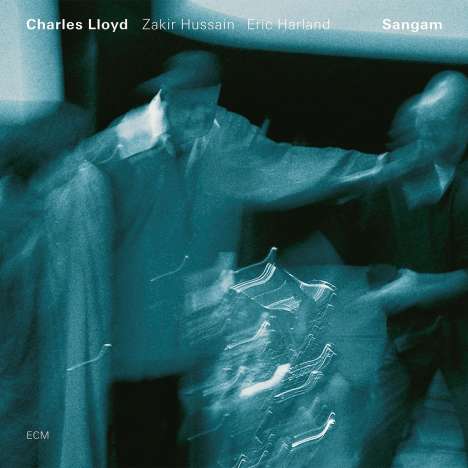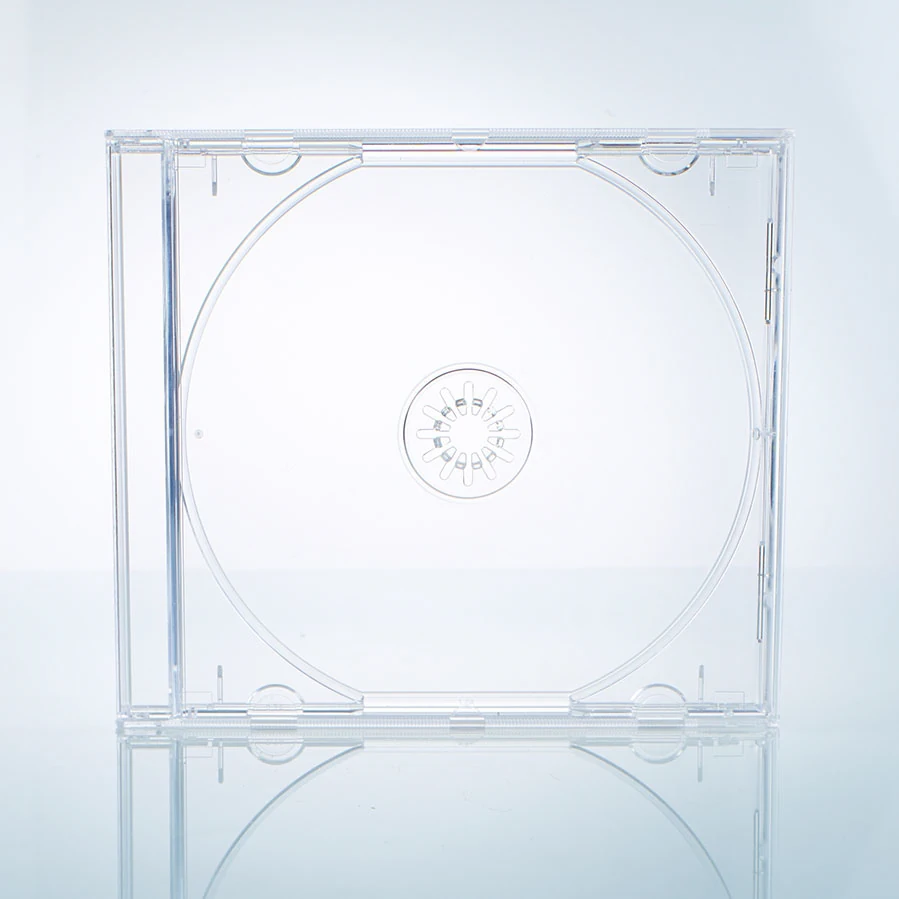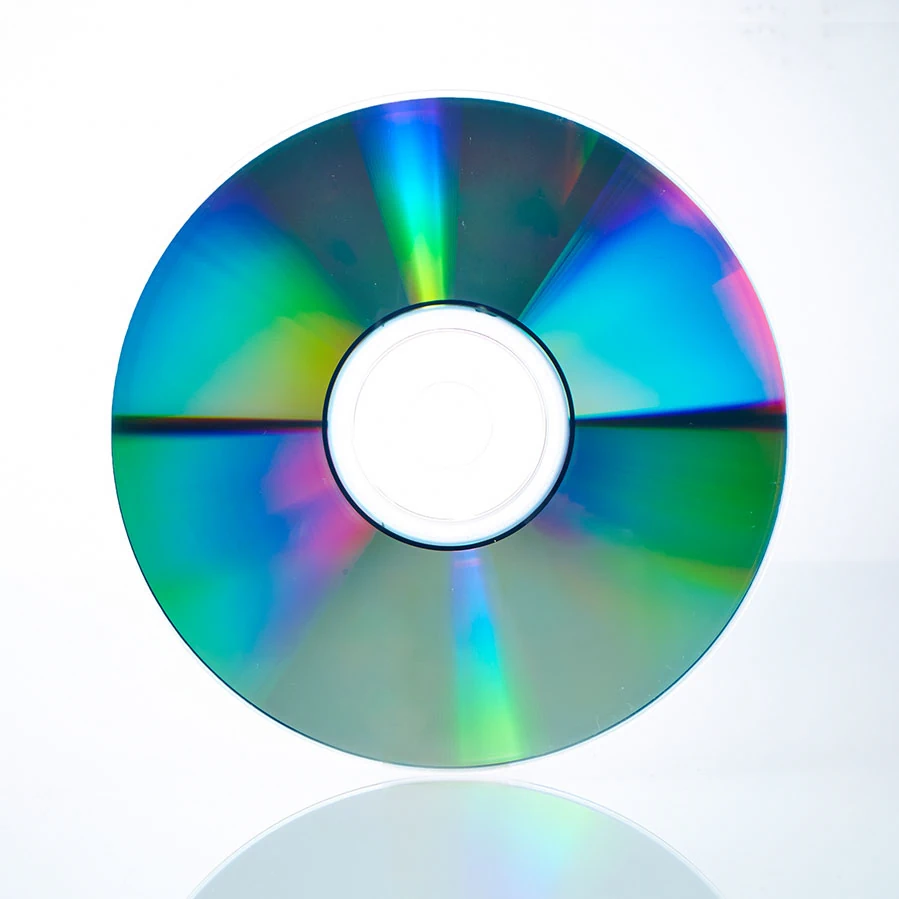Charles Lloyd: Sangam - Live 23.5.2004 At Lobero Theatre, Santa Barbara auf CD
Sangam - Live 23.5.2004 At Lobero Theatre, Santa Barbara
Herkömmliche CD, die mit allen CD-Playern und Computerlaufwerken, aber auch mit den meisten SACD- oder Multiplayern abspielbar ist.

- Label:
- ECM
- Aufnahmejahr ca.:
- 2004
- Artikelnummer:
- 3212138
- UPC/EAN:
- 0602498751831
- Erscheinungstermin:
- 7.4.2006
- Gesamtverkaufsrang: 14248
- Verkaufsrang in CDs: 6720
“Sangam” is the first release from Charles Lloyd’s exciting new trio with Indian tabla master Zakir Hussain and Eric Harland, the gifted drummer from his ‘regular’ quartet. The album – Lloyd’s first live disc for ECM – was recorded in California in 2004. Taped at the Lobero Theatre in Santa Barbara in the context of a memorial concert for Billy Higgins, it brings to the surface some ‘Eastern’ enthusiasms that have been part of Lloyd’s palette for a very long time.
Already in the early to mid 1960s, Lloyd’s way of easing meaning and emotion from a melody in his tenor sax improvisations was influenced by sitar players and druhpad singers, just as it was influenced by the lineage of jazz greats extending from Lester Young and the expressive masters of the blues. The emotional climates of raga also influenced Lloyd’s extended modal compositions. In the early 1970s he collaborated on record with sarod player Aashish Khan and tabla player Pranesh Khan. The line-up of his touring bands, however, largely followed the conventions of jazz – sax, piano and / or guitar, bass, and drums.
The association with Billy Higgins changed this. On “Which Way Is East”(recorded 2001) and some of the duo concerts that preceded it, Lloyd and his drummer friend roved far beyond definitions of jazz – touching on other traditions, combining traditions, playing a very open form pan-cultural music. Lloyd originally sought to extend the spirit of the collaboration with Higgins in the “Sangam” group, which quickly assumed a strong identity of its own. The trio has already toured widely, receiving ovations and ecstatic reviews from Montreal to Madrid.
One of the first surprises on encountering the group is the sense of completeness that it projects. A trio with sax and two drummers, it seems to lack nothing. “There are so many nuances....” Lloyd says. “Sometimes it seems almost orchestral. It’s not about somebody supporting and somebody leading. The carpet we fly on is powered by all of us and whatever is flowing through us. ” Sangam, a word of multiple definition, signifies confluence, a meeting place, a gathering or coming-together, literally or metaphorically. Triveni sangam means a three-way junction or meeting of three rivers, which merge and flow as one. Flow – free and unimpeded flow – is of central importance to the members of the group. Hussain and Harland are granted a lot of space in the music; they make the fullest use of it.
Lloyd first encountered Eric Harland at a jam session in New York’s Blue Note club in September 2001 recognising immediately that he was hearing one of the great drummers.
Within a year Harland was playing with the saxophonist – the latest in a long line of superb Lloyd group drummers that has included Roy Haynes, Tony Williams, Pete La Roca, Paul Motian, Jack DeJohnette, Jon Christensen and Billy Hart. Harland, who turns 30 in 2006, was first inspired to play jazz by the example of Elvin Jones on Coltrane’s “A Love Supreme.” He has since played with McCoy Tyner, Pharoah Sanders and Ravi Coltrane, with Joshua Redman, Betty Carter, Joe Henderson, Wynton Marsalis and many others. He is especially excited about the opportunity to play with Zakir Hussain in Lloyd’s trio: “Everything Zakir plays has this feeling of freedom and authenticity about it. No matter where you go, he is able to be right there in the centre of it with the full force and flavour of his musical identity. And, of course, he’s grown up with different complex rhythms since he was a child, so it is completely natural for him to play through any metric modulation. It’s really an honour to be in a situation where I can have these dialogues with such a master musician. I’m learning a lot about tabla and Indian music, just by breathing in his rhythms.”
The son of the great innovator Alla Rakha (who effectively introduced the tabla to the wider world through his 30 year collaboration with Ravi Shankar), Zakir studied with his father from the age of three and was playing professionally by the time he was 13. He has played with every major figure in Indian classical music but has also been a prime mover in the development of a trans-cultural world music aesthetic. He was barely 20 when he participated in the pioneering genre synthesis of sarod masterAli Akbar Khan and jazz altoist John Handy. Then came Shakti with John McLaughlin, and diverse collaborations with the Grateful Dead’s Mickey Hart.
His 1986 ECM album “Making Music” was a major statement in the ‘world’ arena, with Jan Garbarek, John McLaughlin and bansuri flute genius Hariprasad Chaurasia as contributors. Hussain has also played on several ECM discs with violinist L. Shankar – “Who’s To Know”, “Song For Everyone”, “Nobody Told Me”, “M. R.C. S.”, and “Pancha Nadai Pallavi”.
Latterly he has been playing with the aptly-named Tabla Beat Science whose high-volume collision of cultures incorporates an ever-shifting cast of percussionists and DJs around a core of Zakir, sarangi player Ustad Sultan Khan and bassist Bill Laswell. Zakir Hussain has also collaborated on music for ballet with Yo-Yo Ma.
Charles Lloyd, born in Memphis, Tennessee, has had a long and distinguished history in music. In the 1950s he played with Don Cherry, Eric Dolphy, Ornette Coleman, Billy Higgins, Bobby Hutcherson and others in California, plotting the shape of jazz to come, and in the early 60s became musical director, and principal composer, of Chico Hamilton’s group. Charles Lloyd’s own groups have been exceptional from the outset. His first band featured Hungarian guitarist Gabor Szabo. It was followed by a quartet with the then largely unknown Keith Jarrett and Jack DeJohnette, whose recorded legacy includes the million-selling “Forest Flower”. After a decade in retreat at Big Sur, Lloyd slowly returned to performing in the 1980s and began to record for ECM in 1989 with “Fish Out of Water”. Subsequent albums have included “Notes from Big Sur”, “The Call”, “All My Relations”, “Canto”, “Voice in the Night”, “The Water is Wide”, “Hyperion with Higgins”, “Lift Every Voice”, “Which Way is East”, and “Jumping the Creek”. (ecmrecords. de)
Rezensionen
S. Thielmann in stereoplay 6/06: "Charles Lloyd, einer der letzten großen Mystiker des Jazz, schwebt live durch Sphären voll fernöstlischer Schönheit, getragen von pul- sierenden Klangteppichen, die Tabla-Genius Zakir Hussain gemeinsam mit Drummer Eric Harland ungemein dicht und farbenfroh knüpft." G. Fischer in Musikexpress 8/06: "Was das Trio um den Stil-Wanderer und Saxophonisten Lloyd da an virtuosen und magischen Haken geschlagen hat, um geheimnisvollen Rhyth- men, Melodien und Klängen auf die Spur zu kommen, ist auf dem Live-Mitschnitt 'Sangam' zu bestaunen. Von rituellen Beschwörungen über kleine indische Balladen bis hin zu akstrakten Improvisationen mit Lloyds energiereichem, un- gemein wärmendem Spiel reicht der Bogen, steckt in afri- kanischen Liedern ohne Wort eine pastorale Anmut. Es ist eine Reise zurück zu den Anfängen der Musik und über ihr Echo."Disk 1 von 1 (CD)
-
1 Dancing On One Foot
-
2 Tales Of Rumi
-
3 Sangam
-
4 Nataraj
-
5 Guman
-
6 Tender Warriors
-
7 Hymn To The Mother
-
8 Lady In The Harbor
-
9 Little Peace
Mehr von Charles Lloyd







